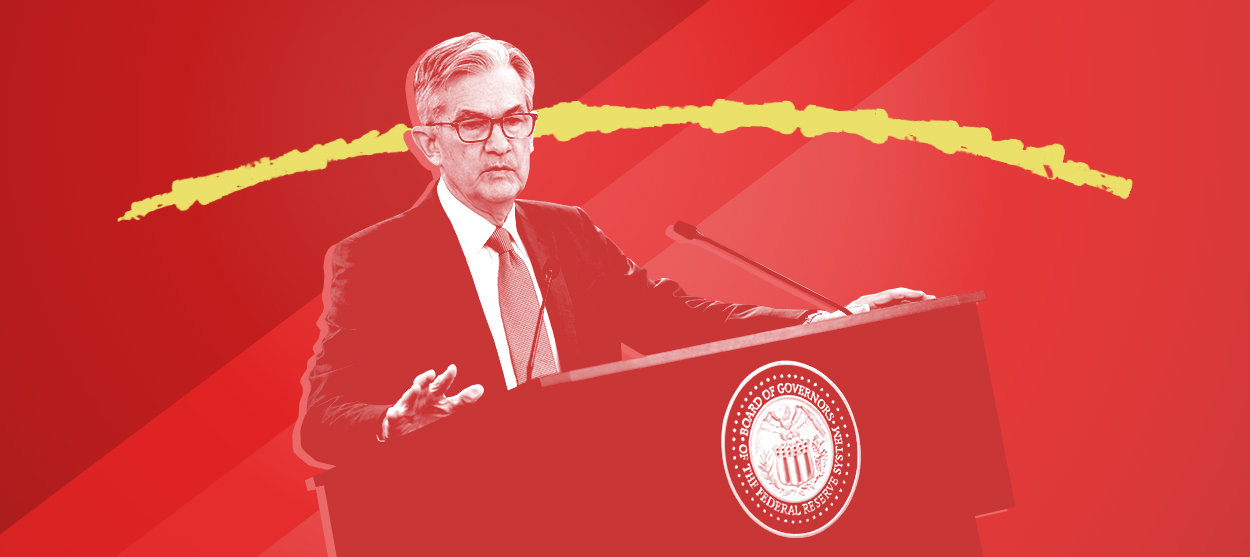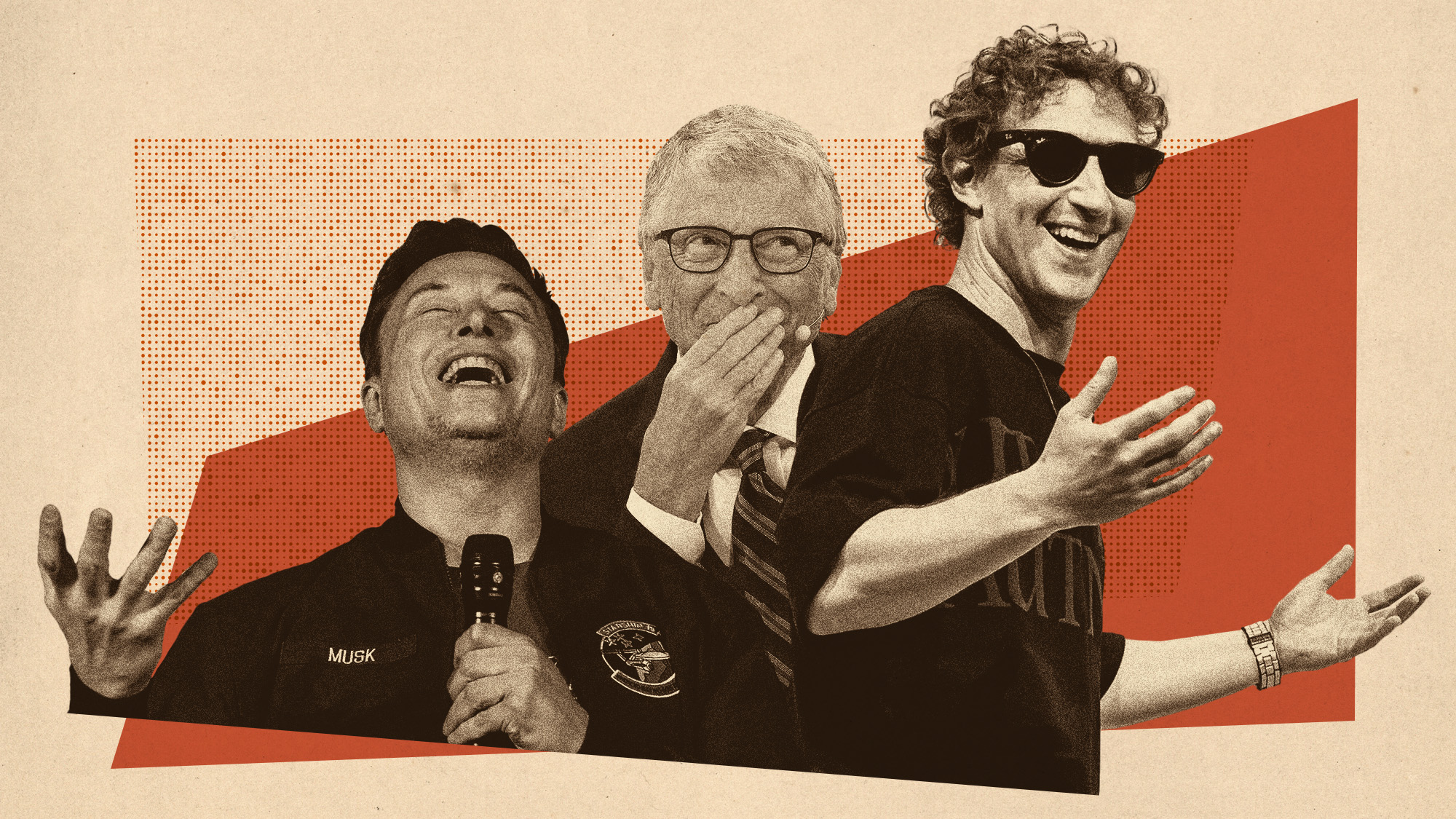The Fed's $1.5 trillion intervention, explained
The central bank just went big to try to prevent a coronavirus-driven financial crisis


In the latest sign that even the soberest of American economic policymakers are freaked out by the coronavirus, the Federal Reserve announced on Thursday it's going to drop an extra $1.5 trillion on the financial system. The Fed actually made an emergency cut of 0.5 percentage points to its interest rate target just the other week. But it seems the central bank officials think the economy needs extra cushioning against the blows from the coronavirus outbreak.
But how exactly will this work, in practice? And who will benefit?
As you might already know, the Fed is the United States' central bank. Crudely put, it's a bank for the country's private banks, and its job is to make sure the financial and banking systems don’t blow up, so Americans can carry on with business and commerce. The most visible of these efforts are the Fed's adjustments to interest rates, which also give the central bank enormous influence over the economy, and the balance between inflation and employment.
The Week
Escape your echo chamber. Get the facts behind the news, plus analysis from multiple perspectives.

Sign up for The Week's Free Newsletters
From our morning news briefing to a weekly Good News Newsletter, get the best of The Week delivered directly to your inbox.
From our morning news briefing to a weekly Good News Newsletter, get the best of The Week delivered directly to your inbox.
But today's $1.5 trillion announcement is a bit different.
Basically, the Fed is offering to do a bunch of dirt-cheap overnight lending to the banks through an oddball financial transaction, to make sure the whole financial system has enough immediately-accessible money to keep functioning smoothly. That's your short and pithy summary. But explaining it further requires a brief history lesson, plus some wonkery. So buckle up!
When people say the Federal Reserve "creates" money, what they're actually referring to are reserves — the money banks hold at the Fed, the same way you hold your money at the bank. Traditionally, the way the Fed adjusted interest rates was by creating reserves and using them to buy U.S. Treasury bonds from the banks, or by selling bonds to the banks and taking reserves in exchange. The first move added to the supply of reserves in the system, while lowering the interest banks charged each other for those reserves. The second move did the opposite. By manipulating the interest banks charged each other for reserves, the Fed adjusted how much lending the banks would do to businesses and individuals, and what interest rate they would charge.
But then came the Great Recession, when the Fed flooded the financial system with trillions in additional reserves to prevent a collapse. That backstopped the banks' finances, but it also increased the supply of reserves so much that there was no point in the banks charging each other anything at all to trade reserves back and forth anymore. The Fed effectively drove its interest rate target to permanent zero, and broke its traditional tool for adjusting interest rates. It had to come up with something new.
A free daily email with the biggest news stories of the day – and the best features from TheWeek.com
What the Fed hit on was paying the private banks an interest rate on their reserves. As a matter of basic economics, there's no reason for the banks to charge anyone a lower interest rate than the Fed was paying them. Which meant the Fed could push interest rates up again by increasing the interest it paid the banks.
Post-2008, other things have changed in the wider economy as well. Regulations have tightened, and now demand that private banks hold on to a much bigger pile of reserves in comparison to the loans they have outstanding, which means those reserves aren't free for trading. The Fed itself partially sold off the massive portfolio of assets it bought to fight the 2008 collapse, and that's reduced the availability of reserves as well. Finally, corporate tax payments and borrowing by the Treasury Department are both events that occur pretty regularly, and also suck reserves out of the system when they happen. (When people and companies pay their taxes, or buy Treasury bonds, the banks they work with have to send reserves back to the government.)
Fast forward to last fall, and this confluence of factors caused a key piece of the financial market — the "repo" market — to short circuit. Essentially, a "repo" is where one bank or financial firm sells a Treasury or other asset to another bank or firm in exchange for reserves, with a preset agreement to buy it back at a later date. As I mentioned up top, a repo is essentially a cheap short-term loan; a way to get reserves quick and easy for immediate needs. (The banks trade huge amounts of reserves back and forth all the time to settle the transactions that average customers and businesses in the real economy make with each other.) But last fall, thanks to all those colliding trends, the financial system suddenly found itself short of the reserves it needed to conduct all the repos people and firms wanted. Interest rates in the repo market briefly shot up way past the Fed's target, causing everyone to freak out, and the central bank to intervene.
The Fed itself conducts repos (and "reverse" repos) with the banks, to fiddle with the supply of reserves and fine tune its interest rate target at the edges. But after last fall's mini crisis, the central bank started doing repos on a regular basis, declaring it would do a certain dollar amount of repos without a certain time window.
At long last, that brings us up to today.
Battered by the damage the coronavirus is doing to global production and trade, plus the oil price war that just broke out between Saudi Arabia and Russia, plus the chaos in the U.S. stock market, the repo market is once again showing the same strains as last fall. Fed policymakers were worried about a repeat crisis, in which everyone would run out of the reserves they needed to buy and sell Treasuries, markets would seize up, and we'd get another interest rate spike.
The central bank had already stepped up its repo purchase offers. But today, to get firmly ahead of the problem, the Fed went big: It announced three new windows for repos, all starting in the next few days, two of which will last three months, and one that will last one month, with each window of repos capped at $500 billion a piece. Hence the $1.5 trillion.
As a straightforward matter of the Fed's obligations, this move was a no-brainer: It makes a 2008-style financial meltdown less likely, and there's no major downside risk like inflation. (The money the Fed is lending is being used to preserve current economic activity, not stimulate more activity.) But there is a bitter irony here.
While the Trump administration dithers and argues with Congress and trips over its own feet, the Federal Reserve has moved decisively to counteract the economic impacts of the coronavirus. Unfortunately, because of how the Fed is designed, and the tools legally provided to it by Congress, all the central bank can really do is offer lots of easy money to protect the profits of big banks and wealthy investors. Like I said, a repo is basically a short-term loan, and the closest analogue to a repo in everyday life is probably credit card debt or payday loans. But while the Fed aims to keep the repo interest rate just over one percent, the average working stiff pays much higher interest on her equivalents.
You could imagine a different world where average citizens and businesses had accounts at the Fed (not just the big financial firms) and the central bank could create money and drop it directly into people's pockets, skipping the middle-man entirely. But it's not the world we live in. After the 2008 collapse, Congress actually did give the Fed a new legal tool, allowing it to lend directly to help businesses in the real economy to help in an emergency. But that's still considered a radical departure from what the Fed is traditionally "supposed" to do. And so far that tool hasn't been put to use, despite calls from people like Sen. Elizabeth Warren (D-Mass.) to let it rip.
In short, it's the rich and the powerful of Wall Street who benefit most directly from the Fed's willingness to act and go big. The central bank can prevent the financial system from coming apart, which is certainly a good thing. But it can do little for the average person's livelihood. Not only is that a galling and unjust situation, but, like all trickle-down strategies, its economic value is decidedly limited.
Jeff Spross was the economics and business correspondent at TheWeek.com. He was previously a reporter at ThinkProgress.
-
 Has Zohran Mamdani shown the Democrats how to win again?
Has Zohran Mamdani shown the Democrats how to win again?Today’s Big Question New York City mayoral election touted as victory for left-wing populists but moderate centrist wins elsewhere present more complex path for Democratic Party
-
 Millions turn out for anti-Trump ‘No Kings’ rallies
Millions turn out for anti-Trump ‘No Kings’ ralliesSpeed Read An estimated 7 million people participated, 2 million more than at the first ‘No Kings’ protest in June
-
 Ghislaine Maxwell: angling for a Trump pardon
Ghislaine Maxwell: angling for a Trump pardonTalking Point Convicted sex trafficker's testimony could shed new light on president's links to Jeffrey Epstein
-
 The last words and final moments of 40 presidents
The last words and final moments of 40 presidentsThe Explainer Some are eloquent quotes worthy of the holders of the highest office in the nation, and others... aren't
-
 The JFK files: the truth at last?
The JFK files: the truth at last?In The Spotlight More than 64,000 previously classified documents relating the 1963 assassination of John F. Kennedy have been released by the Trump administration
-
 'Seriously, not literally': how should the world take Donald Trump?
'Seriously, not literally': how should the world take Donald Trump?Today's big question White House rhetoric and reality look likely to become increasingly blurred
-
 Will Trump's 'madman' strategy pay off?
Will Trump's 'madman' strategy pay off?Today's Big Question Incoming US president likes to seem unpredictable but, this time round, world leaders could be wise to his playbook
-
 Democrats vs. Republicans: who are US billionaires backing?
Democrats vs. Republicans: who are US billionaires backing?The Explainer Younger tech titans join 'boys' club throwing money and support' behind President Trump, while older plutocrats quietly rebuke new administration


